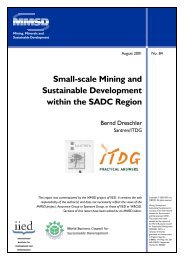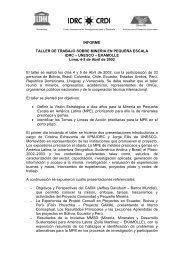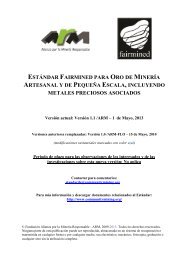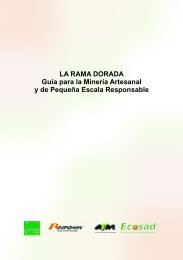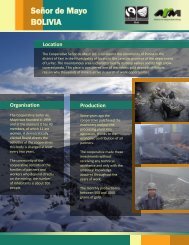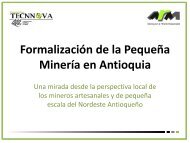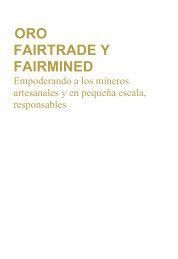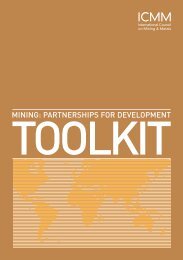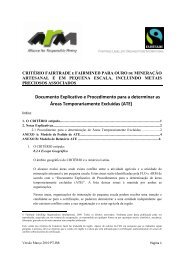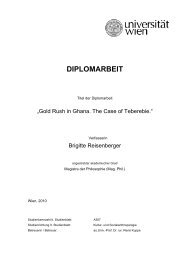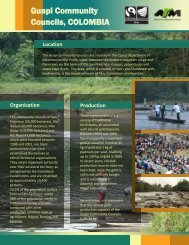A Poisonous Mix - Human Rights Watch
A Poisonous Mix - Human Rights Watch
A Poisonous Mix - Human Rights Watch
Create successful ePaper yourself
Turn your PDF publications into a flip-book with our unique Google optimized e-Paper software.
quality of education. 332 High student-teacher ratios, little or no teacher training, and<br />
insufficient supplies adversely affect the quality of education. 333<br />
An alternative to the public school system are community schools that are largely<br />
independent. A community school is any not-for-profit school created and managed by a<br />
community or association. Official local authority recognition is granted for any school<br />
meeting a set of simple criteria. 334 The recognition of community schools has expanded the<br />
access to education, but has formalized the paying of school fees and lowered education<br />
standards, as the majority of teachers are untrained. 335<br />
One strategy to improve access to education in areas with high degrees of mobility and<br />
migration is the creation of mobile schools. In northern Mali, mobile schools have been<br />
established for nomadic groups in recent years. Teachers move together with the nomads<br />
and teach in tents that are provided by the community. 336 The experience from northern<br />
Mali could serve as a useful model for Mali’s mining zones.<br />
Social Protection Measures to Improve Access to Education<br />
Social protection schemes could boost access to education for child laborers in artisanal<br />
mining zones and elsewhere. Social protection is a set of policy measures aimed at<br />
increasing access to basic social services and reduce vulnerability to economic and social<br />
shocks. It comprises social assistance (such as cash transfers and free school meals),<br />
social services for poor households, as well as social insurance and related legislation. 337<br />
Until now, Mali has not had a consistent social protection policy and has implemented<br />
social protection measures only partially, without particular attention to the needs of<br />
vulnerable children. Cash transfer programs have been used in several countries to<br />
support access to education for vulnerable children. 338<br />
332 World Bank, “Le systeme éducatif malien,” p. 14.<br />
333 Oxfam, “Delivering Education For All,” p. 18; Ministère de l’Education, “Annuaire,” p. 13.<br />
334 USAID, “Meeting EFA: Mali Community Schools,” 2006, http://futureofschooling.org/uploads/USAID-MaliCaseStudy.pdf<br />
(accessed June 27, 2011), pp. 1-2.<br />
335 Oxfam, “Delivering Education For All,” pp. 17-19.<br />
336 Welthungerhilfe, “Mobiles Lernen: In Mali geht die Schule mit auf Wanderschaft,” May 17, 2011, http://www.welthungerhilfe.de/<br />
mobile-schule-mali.html (accessed August 9, 2011); <strong>Human</strong> <strong>Rights</strong> <strong>Watch</strong> interview with representative of Ministry of Education, Literacy,<br />
and National Languages, Bamako, February 16, 2011. The government program foresees the introduction of more mobile schools for<br />
nomads in the future: Government of Mali, “Programme d’Investissement pour le Secteur de l’Education 2010-2012,” pp. 29-30.<br />
337 Overseas Development Institute/UNICEF, “Strengthening social protection for children in west and Central Africa,” 2009,<br />
http://www.unicef.org/wcaro/wcaro_22_UNICEF_ODIbriefing_paper__SocialProtection_LOW.pdf (accessed June 23, 2011), pp. 1-2.<br />
338 Overseas Development Institute, “Tackling child vulnerabilities through social protection: Lessons from West and Central<br />
Africa. Background Note,” July 2010, London.<br />
A POISONOUS MIX 70



